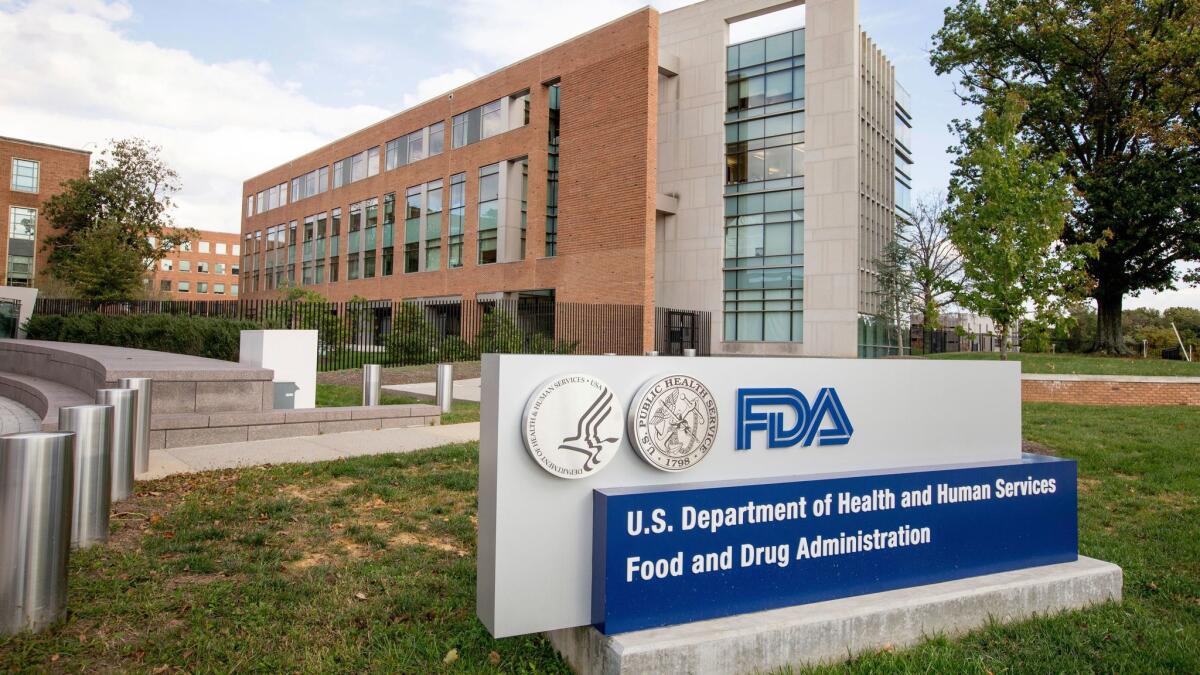The odds of a drug having a significant safety issue after winning FDA approval are nearly 1 in 3, study finds

- Share via
Almost one-third of new drugs approved by U.S. regulators over a decade ended up years later with warnings about unexpected — sometimes life-threatening — side effects or complications, according to a new analysis in the Journal of the American Medical Assn.
Researchers looked at potential problems that cropped up during the routine monitoring that’s done once a medicine has been approved by the Food and Drug Administration and is on the market. The results, published Tuesday, covered all 222 prescription drugs approved by the FDA from 2001 through 2010.
The 71 drugs that were flagged included top sellers for treating depression, arthritis, infections and blood clots. Safety issues included risks for serious skin reactions, liver damage, cancer and even death.
“The large percentage of problems was a surprise,” and they included side effects not seen during the review process, said senior author Dr. Joseph Ross, an associate professor of medicine and public health at Yale University.
While most safety concerns were not serious enough to prompt recalls, the findings raise questions about how thoroughly drugs are tested before approval, said drug safety expert Thomas Moore.
But Ross said the results suggest that the FDA “is kind of doing a great job” at scrutinizing drugs after approval.
New drugs are generally tested first in hundreds or even thousands of people for safety and effectiveness.
“We know that safety concerns, new ones, are going to be identified once a drug is used in a wider population. That’s just how it is,” Ross said. “The fact that that’s such a high number means the FDA is working hard to evaluate drugs, and once concerns are identified, they’re communicating them.”
The researchers analyzed online FDA data on new drugs and the agency’s later safety announcements. Problems surfaced on average about four years after approval.
The FDA said in a statement that it performs post-market monitoring “to identify new safety information that may impact product labeling.” The agency said it would review the study findings but declined to comment further.
The study counted black-box warnings for dozens of drugs. These warnings involved serious problems including risk of death or life-threatening conditions linked with the drugs.
There were also alerts for less serious potential harms related to dozens of drugs. Among them: Humira, used for arthritis and some other illnesses; Abilify, used for depression and other mental illness; and Pradaxa, a blood thinner.
Three drugs were withdrawn because of the potential for death or other serious harm. They were Bextra, an anti-inflammatory medicine, because of incidence of heart problems; Raptiva, a psoriasis drug, which is linked to a rare nervous system illness; and Zelnorm, a bowel illness drug, which has been connected to heart problems.
Safety issues were most common for psychiatric drugs and biologic drugs — made from living cells rather than chemicals — than for older drug types. Drugs brought to market through “accelerated” approval were slightly more likely to have later safety issues than those approved through conventional channels, a link seen in some previous research.
In recent years, there has been increasing pressure on the FDA from consumers and others to speed up its regulatory review process to get new drugs to the market sooner, Ross said.
Moore, a senior scientist for drug safety and policy at the Institute for Safe Medication Practices, said the new results raise concerns about whether new drugs are being extensively tested before approval. He noted that since 2011, drugs have increasingly been approved based on studies in small numbers of patients amid public criticism questioning whether the FDA is keeping potential cures away from patients.
“The answer is, you can’t know whether they’re valuable and life-saving treatments unless you test them” adequately, Moore said.
The Pharmaceutical Research and Manufacturers of America, a drug industry trade group, is reviewing the study, said spokeswoman Holly Campbell. In a statement, she said the industry is committed to post-market surveillance of new medicines, but added, “Even with rigorous clinical studies and regulatory review it may be impossible to detect certain safety signals until several years after approval, once the medicine is in broader use.”
MORE IN SCIENCE
Scientists are on alert after the latest changes at the EPA
To live a long life in America, it helps to be born in the right county
Another way humans are polluting the environment: Too much noise






